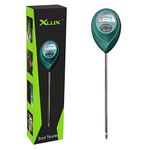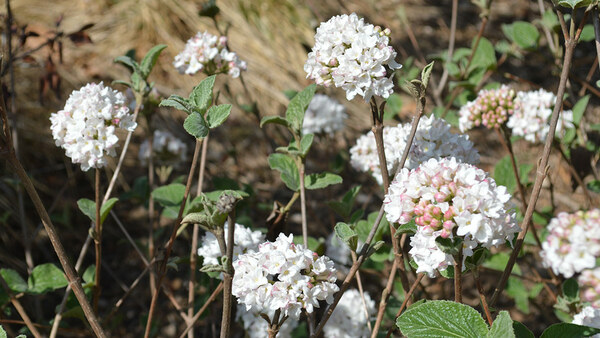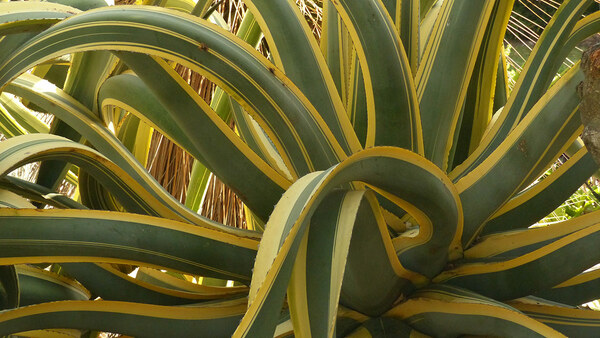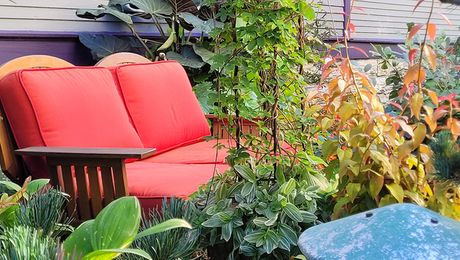
Annual plants are a garden designer’s secret weapon. Endlessly versatile and extremely showy, annuals add nonstop color without a high price or a lot of work. They are perfect for gardeners who crave change—from year to year or from one season to the next. And they offer instant impact for filling in bare spots between slower-growing shrubs and perennials. Summer annuals brighten gardens with flowers and foliage, while cool-season annuals bring interest to the winter landscape.
Annual blooms that take the heat

Summer annuals in southwestern gardens require a certain level of ruggedness to survive the heat. One of the easiest annuals to grow is native yellow sneezeweed (Helenium amarum). This golden bloomer features fine, feathery foliage, and thrives in full sun on lean, dry to average, well-draining soil. Yellow sneezeweed remains compact, growing 1 to 2 feet tall and wide.

Tropical locales south of the border bring a few favorite annuals, including the playful globe amaranth (Gomphrena globosa), which blooms its heart out all summer long. My favorite globe amaranth cultivar for Oklahoma is ‘Fireworks’, which dazzles with hot pink flowers standing atop 3- to 4-foot stems. Globe amaranth spreads 3 to 4 feet wide and lends an architectural element to the garden.

Dwarf morning glory (Evolvulus glomeratus) is another wonderful tropical annual. The stunning cultivar ‘Blue My Mind’ lives up to its name, with masses of true-blue flowers covering mats of silvery foliage growing just 8 inches tall and up to 12 inches wide. Both beauties love full sun and require soil with good drainage.
Annual plants with fabulous foliage

Using plants with flashy foliage is an easy way to add vibrant color to the landscape. Coleus (Plectranthus scuteleriodes, Zones 10–11) is the most common annual bedding plant grown for foliage (though technically coleus is a tender perennial, not an annual). Coleus come in a range of colors and patterns to fit any palette; one of my favorites is ‘Royale Pineapple’. Look for sun- and heat-tolerant varieties, but consider providing afternoon shade in the hottest locations. These plants will reward you with dense mounds of foliage 2 to 3 feet round.

Annual grasses in the genus Pennisetum feature some of the most colorful blades available for sunny beds. For dramatic color, consider ‘Purple Majesty’ ornamental millet (Pennisetum glaucum), which produces stunning dark purple foliage that stands very erect up to 5 feet while spreading only 1 foot wide. It performs best in average, moderately fertile, and well-draining soil.
Annuals that reseed in the garden

For colorful blooms year after year, consider sowing annual plants known to self-seed in the garden. Talk about the ultimate low-budget garden! Among the showiest of these is blanket flower (Gaillardia pulchella). This beloved prairie flower looks a lot like its perennial cousins, with cheerful red and yellow blooms abuzz with pollinators. Growing 12 to 18 inches tall and 6 to 12 inches wide, this pint-size native thrives in sandy soil and dry summer heat. Plant or direct-sow in full sun and dry to medium, well-drained soil.

Calendula or pot marigold (Calendula officinalis) is a popular winter annual in the Southwest. Calendula does not tolerate hard freezes, so planting times vary by winter hardiness zone. Gardeners in Zones 9–11 can sow calendula seeds in late summer or early fall for vibrant blooms winter through spring. In cooler areas, plant calendula after the threat of frost has passed for spring and fall blooms. This self-seeding annual performs best in medium, well-draining soil in full sun.
Never forget about water needs when shopping for annuals
As you seek annuals for your corner of the world, consider water needs. The Southwest region varies considerably in annual rainfall and average temperatures. Though the plants listed here are all heat tolerant, their water needs differ. Here are a few guidelines to remember when selecting which annual is right for your garden:
- In general, plants with tropical origins require more irrigation.
- Natives tend to get by with less water.
- Even the most drought-tolerant plants require regular irrigation after planting to establish a healthy root system and get off to a good start.
—Kim Toscano is a horticulturalist, entomologist, garden designer, writer, and graphic designer. She previously hosted Oklahoma Gardening, a weekly PBS television program produced by the Oklahoma Cooperative Extension Service.
For more on annuals here.
Find more information on Southwest gardening here.
Photos unless otherwise specified: Kim Toscano
Fine Gardening Recommended Products

isYoung Birdlook® Smart Bird Feeder with Camera
Fine Gardening receives a commission for items purchased through links on this site, including Amazon Associates and other affiliate advertising programs.

Sunnydaze 14-Inch Round Lava-Finish Ceramic Plant Pot
Fine Gardening receives a commission for items purchased through links on this site, including Amazon Associates and other affiliate advertising programs.

XLUX Soil Moisture Meter
Fine Gardening receives a commission for items purchased through links on this site, including Amazon Associates and other affiliate advertising programs.
- Simply insert the moisture meter into soil and you'll get the test result instantly
- Single probe, less hurts to the roots, doesn't dig up too much soil after test



















Comments
Log in or create an account to post a comment.
Sign up Log in